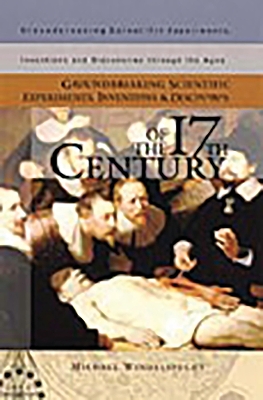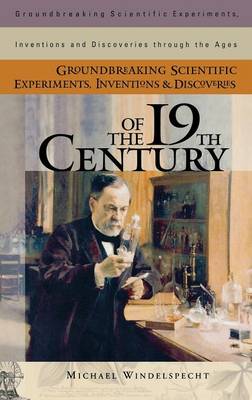Groundbreaking Scientific Experiments, Inventions and Discoveries through the Ages
2 total works
Groundbreaking Scientific Experiments, Inventions, and Discoveries of the 17th Century
by Michael Windelspecht
The 17th century was a time of transition for the study of science and mathematics. The technological achievements of this time directly impacted both society and the future of science. This reference resource explores the major scientific and mathematical milestones of this era, and examines them from both their scientific and sociological perspectives. Over fifty entries, arranged alphabetically, illustrate how this was a time marking the first wide-spread application of experimentation and mathematics to the study of science--an exciting time brought to life through this unique exploration.
Students will find not only the familiar names like Galileo and Newton who are well-recognized for their contributions in science, but they will also encounter the names of lesser-known scientists and inventors who challenged long-held doctrines and beliefs. The contributions of the scientists, mathemeticians, and inventors of the 17th century would have a significant impact on the course of science into modern times. This impact is explored in detail to provide an understanding of how scientific study affects everyday life and how it evolves to provide a better understanding of our world.
Groundbreaking Scientific Experiments, Inventions, and Discoveries of the 19th Century
by Michael Windelspecht
The 19th century is known as the modern era of science. Many of the ideas, theories, and inventions developed during this time are used everyday in today's society. Windelspecht investigates the century's tremendous discoveries, inventions, and inquiries in more than 60 alphabetical entries. This reference presents familiar subjects, such as the telephone and elevator, as well as those less frequently studied, such as the spectroscope and Pasteur's development of the germ theory.
Readers will find a thorough discussion of each entry's scientific impact and gain an understanding of the lasting social and political importance of these advancements. Narratives enrich many of the entries by adding perspective to the century's fascinating history. Students and researchers will find this reference book easy to use. An appendix of entries listed by scientific field, a glossary of terms, and name and subject indexes make this the perfect, easy-to-use reference for anyone interested in the scientific revolutions of the 19th.

